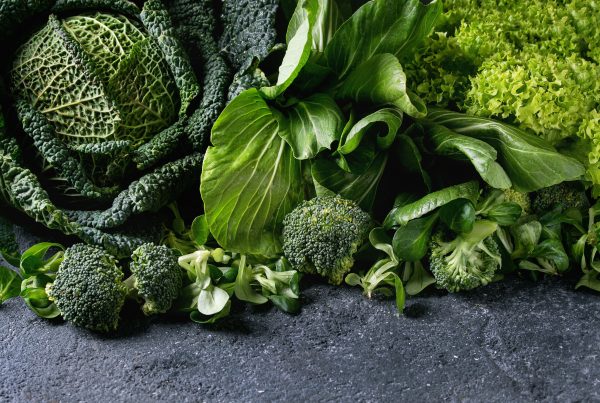”Arizona, what do you know about our circulatory system? It carries out so many important functions in our body. This week's article takes a deep dive on our circulatory system and how we can support it. We hope you learn something new!
Reading time: 15 Minutes
MWi Hacks:
- Understand how exercise can improve your circulation
- Learn how your Circulatory System works
MWi Summary:
- The primary function of the circulatory system is to deliver oxygen and nutrients to organs and tissues as well as taking toxins away.
- Our circulatory systems are made up of our heart, lungs, blood vessels, liver, and stomach/intestines.
- Exercise helps to strengthen our circulatory systems in a variety of ways:
- Promotes blood vessel health
- Helps inoculate against chronic disease
- Reduces heart-disease risk
- Bolsters athletic performance
- Improves lymphatic function
- Makes heart bigger and stronger
This intricate network, increasingly considered by some experts to be an organ in its own right, leaves no cell or body system untouched. It powers your brain, lungs, stomach, intestines, liver, waste and lymph systems, and muscles in important ways. Healthy circulation allows you to not only survive but thrive.
While there are many factors that affect the circulatory system (including genetics and lifestyle factors, such as nutrition), exercise is notably effective. Movement of all kinds keeps your heart pumping well and your vascular system strong and clear. In a beautiful cycle, the better your circulatory system works, the better you move — and perform — in the gym and in life.
“The circulatory system loves exercise,” says Donald Dengel, PhD, director of the Laboratory of Integrative Human Physiology at the University of Minnesota in Minneapolis. He explains that exercise makes the circulatory system stronger, more flexible, and more expansive — all at the same time. A healthy circulatory system then returns the favor by boosting athletic performance.
Still, we often overlook how circulatory health and exercise benefit one another. While we can see and feel the effects of our fitness efforts as we lose fat, gain strength, and build endurance, improvements in our circulation aren’t as visible. Unless there is a problem — be it a blocked artery that leads to a heart attack or stroke or impaired blood flow that leaves feet cold or tingly — it’s a system that hums along, a diligent but silent worker that doesn’t ask for much in order to give a great deal in return.
Just because it’s quiet, however, doesn’t mean the circulatory system doesn’t deserve some attention when you hit the gym. Let’s explore this intersection of exercise and blood flow, and discover how small changes to your fitness routine can make a measurable, long-term impact.
How Your Circulatory System Works
The circulatory system is often thought of as a static network of tubes that simply shuttles blood around the body — but it’s so much more. Also called the cardiovascular system (or sometimes just the vascular system), it’s composed of the lungs, lymph tissue, heart, and blood vessels, and it works in concert with your liver, stomach, intestines, and other organs. Moreover, the circulatory system is metabolically active, supports optimal immune function, and serves as an important waste-removal system.
 Illustration by Stuart Briers
Illustration by Stuart Briers1. Heart
This muscular pump contracts and relaxes some 80 times a minute on average (depending on a person’s genetic profile and fitness level), moving enriched blood through your arteries to your brain, organs, tissues, and bones. The oxygen and nutrients it delivers fuel every cell in your body. Regular exercise helps strengthen and enlarge the heart.
2. Lungs
When you inhale, your lungs fill with oxygen. Then, in a process known as gas exchange, oxygen crosses over from the lung tissue to the bloodstream via a web of capillaries. Exercise has been shown to improve the efficiency of gas exchange. This newly oxygenated blood then flows into the left side of the heart.
3. Blood Vessels
This network of arteries, capillaries, and veins reaches every nook and cranny of your body. Blood travels the whole loop — from the heart to every cell and back to the heart again — in about one minute. The 5 to 6 quarts of blood in your system account for as much as 7 percent of your body weight. Those who exercise regularly tend to have greater blood volume.
4. Liver
Your liver detoxifies your body, filtering waste via your blood and bile. Exercising regularly improves blood flow by strengthening the heart and blood vessels, bolstering this filtration system. In turn, overall energy and well-being — including athletic performance — are improved if your body’s natural detox method is functioning well.
5. Stomach and Intestines
Your blood absorbs nutrients from digested food via capillaries in your gastrointestinal system; your blood vessels then distribute these nutrients throughout your body. Exercise not only increases the formation of “collateral” blood vessels, which improves nutrient delivery — regular movement also improves digestion and makes you more regular.
6. Waste System
In addition to delivering oxygen and nutrients to your body’s tissues, your blood picks up waste products, like carbon dioxide and lactic acid. Exercise boosts overall circulation, which moves waste out of the body through the capillaries. Blood then travels back to the heart and lungs, where the cycle starts all over again.
Exercise RX
A solid fitness regimen benefits your entire body by boosting your circulation in surprisingly varied and vital ways, which makes sense when you remember how much of your body is touched by your vascular system. These are some of the key ways working out can improve your circulatory health.
1. Exercise promotes blood-vessel health.
A healthy vascular system can be measured in two ways: structure and function.
“Arteries are like tubes, with an outer wall and inner wall, and we can talk about both pieces being in good or bad health,” explains Dengel. “In terms of wall thickness, being too thick is not structurally sound — we don’t want stiff vessels. We want them to be very flexible.”
That leads directly to function. When vessels are flexible, they have elastic properties, like the ability to constrict and dilate when presented with changes in volume and pressure. Elasticity is the definition of a healthy artery.
Exercise boosts vessel flexibility because “blood pressure goes up temporarily when we exercise, which forces the blood to flow faster and creates turbulence against the wall of the artery,” he says. “It is like the artery itself is exercising.”
It’s especially important to maintain vessel flexibility in middle age and beyond.
“Vessels are very plastic and can take a lot of abuse when we’re young,” says Dengel. “As we age, unhealthy lifestyle habits — consuming a lot of low-quality fats and sugary food and drinks, for instance — have more effect. Our vessels become more rigid.”
A wealth of research supports the idea that exercise helps prevent — and can even correct — some of that arterial damage. A 1993 study published in the journal Circulation examined 146 men and women, ages 21 to 96. Researchers found that higher physical-conditioning status, determined by VO2 max, was associated with reduced arterial stiffness.
Another study found that the reduction of stiffness was associated with improvement of insulin resistance in type 2 diabetics.
In addition to keeping blood vessels bendy, regular exercise has been shown to reduce arterial inflammation and reduce the dangerous buildup of arterial plaque.
In a 2009 study of mice, researchers found that a consistent daily exercise program over six months helped make existing plaques stronger and less likely to rupture (plaque ruptures can cause a heart attack or stroke).
Regular exercise has also been shown to prevent and dissolve blood clots by enhancing fibrinolysis, a process by which enzymes break down fibrin, a component of blood clots.
2. Exercise helps inoculate against chronic disease.
Vascular endothelial cells line every surface of the circulatory system, sheathing the heart, veins, arteries, and capillaries. These cells were once thought to be nothing more than a sort of biological cellophane wrapper, with only one function: to let a bit of water and some electrolytes pass through to tissues.
Researchers now know that these cells play a major role in maintaining optimal health. Damage to the endothelial lining has been linked to cardiovascular disease, stroke, insulin resistance, diabetes, kidney failure, and cancer.
Exercise puts pressure on the vascular endothelium — and that’s a good thing. Experts believe the various types of stresses exercise induces prepare the endothelial cells to withstand everyday threats, whether it’s inflammation from eating too much sugar or damage to the lung tissue from breathing smoggy air.
3. Exercise reduces heart-disease risk.
Movement improves vascular hormone production. In as little as a few weeks, exercise has been found to increase the production of atrial natriuretic peptide (ANP), the vascular hormone that counterbalances high blood pressure.
“Research has shown that older individuals who engage in exercise over the long term can see blood pressure improvements” similar to results from ACE inhibitors prescribed for hypertension, says Brad Dieter, PhD, research fellow at Providence Medical Research Center in Spokane, Wash.
High circulating levels of the vascular hormone brain natriuretic peptide (BNP), on the other hand, have been associated with increased risk for heart failure. According to a 2012 study published in the Journal of Cardiovascular Disease Research, endurance exercise, in particular, was found to reduce circulating concentrations of BNP.
4. Exercise bolsters athletic performance.
A stronger heart pumps more blood, more efficiently, to your lungs and throughout your body. The result? More oxygenated blood reaches your muscle tissue — and when muscles have more oxygen for fuel, they can work harder, improving athletic performance.
Over time, this higher volume of blood widens the blood vessels (another benefit) and builds new ones. “When you exercise, you create collateral vessels,” says Dengel. So not only is more oxygen-rich blood being pumped by a stronger heart, but that blood has more routes to reach muscle tissue.
At the same time, aerobic activity improves lung capacity — and greater lung capacity means more staying power in your favorite game or activity.
5. Exercise improves lymphatic function.
The lymph system — an extensive network of tissues, organs, and vessels that transport lymph fluid throughout the body — has two primary functions: balancing the fluids in the body and producing white blood cells that help fight off infection. The lymph system works in close concert with the blood vessels, and the robust circulation of lymph fluid is essential for optimal health.
Certain exercises promote the flow of lymph fluid. Jumping on a trampoline for just 10 minutes can enhance lymphatic activity. Inversions, like shoulder stands in some yoga practices, help drain lymph fluid and accelerate the rate at which lymph fluid is cleansed and filtered.
6. Exercise makes the heart bigger and stronger.
“Endurance training — like running or rowing — provides specific benefits to the heart,” says Dieter. “The chambers of the heart get bigger.”
That process is called eccentric remodeling, and it allows the amount of blood being pumped out of the heart to increase with each heartbeat. That’s why endurance athletes’ resting heart rates are so low. Their hearts don’t have to beat as often because each contraction pumps out a higher volume of blood.
Strength training has a different effect on the heart. “If you’re weightlifting, your heart will increase in size, but the chamber won’t get bigger. That’s called concentric remodeling,” he explains.
Concentric remodeling increases pressure across the chamber of the heart, so the heart wall gets thicker.
“The heart is a muscle, so just like other muscles, weightlifting makes the heart muscle get stronger,” he says.
(To learn about the possible cardiac risks of extreme, high-intensity endurance training, visit “Out of Rhythm“.)
While strength and endurance training may confer different specific benefits, experts agree that any fitness regimen is a win for the circulatory system. “There is a baseline benefit to any type of movement,” says cardiologist Mimi Guarneri, MD, FACC, author of The Heart Speaks: A Cardiologist Reveals the Secret Language of Healing.
The simple advice to move more — no matter what type of movement you choose — recalls the old saying that the best exercise is the one you will actually do. So whether your passion is golf, doing cartwheels, or Olympic lifting, the fact that you are moving is what matters. Movement is medicine for circulatory health.
https://experiencelife.com/article/how-exercise-affects-circulation-and-vice-versa/
More about the Expert:
Laine Bergeson Becco a freelance writer, ghostwriter, and journalist. Most of the time I write about art, fashion, and health, though almost no subject escapes my curiosity.
I’m a contributing editor at Experience Life magazine and a fashion reporter for the Minneapolis Star Tribune. I rely on my training as a functional medicine-certified health coach to ghostwrite for doctors and other health professionals.
I recently won a Folio award for Best Range of Work by Single Author 2019 for my writing in Experience Life.
In my spare time, I am an avid jigsaw puzzler and a mediocre piano student.





